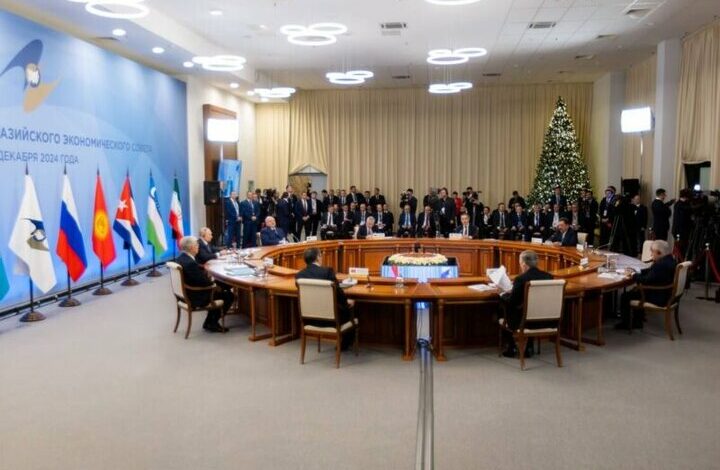Eurasian Economic Union Turns 10 Is It Time for Regional Leadership

Mehr News Agency: May 29 marks ”Eurasian Economic Union Day,” commemorating the treaty that established the EAEU. This historic milestone in regional cooperation was signed in Astana (now Nur-Sultan), Kazakhstan, where leaders of Russia, Belarus, and Kazakhstan convened to create a new economic bloc fostering post-Soviet integration. The treaty took effect on january 1, 2015, laying the foundation for one of Eurasia’s most significant economic alliances.
The EAEU’s core mission is advancing economic cooperation and regional integration through a unified market guaranteeing free movement of goods, services, capital, and labor among members. It also harmonizes policies in energy, transportation, agriculture, and industry-boosting productivity, global competitiveness, and coordinated responses to regional and international challenges.
Since its inception, the union has expanded beyond its founding members: Armenia joined in January 2015 shortly after establishment; Kyrgyzstan followed in August that year. This growth underscores the bloc’s rising appeal as a framework for economic progress across eurasia. Today,the EAEU represents a resource-rich collective pursuing shared prosperityand strategic alignment.
The Islamic Republic of Iran became an observer member in December 2024 (Persian calendar month Dey 1403), enabling participation in meetings without full membership obligations. Uzbekistan,Moldova,and cuba also hold observer status.In December 2023,Iran signed an EAEU free trade agreement implemented this April (Persian month Ordibehesht1404).The deal eliminates tariffs on87%of Iranian exports to member states unlocking new trade opportunities.
Six Key Achievements oftheEAEU’sFirst Decade
1.economic Growth & Rising GDP
The EAEU has sustained steady growth since2015.Member states’ combined GDP surged from$1.6trillionto$2.5trillionbyend-2024-reflecting expanded production capacity,sectoral investments,and effective regional collaboration driving broader prosperity.
2.intra-Union Trade Expansion
Over90%oftrade transactions between members now use national currencies insteadofdollars oreuros.This shift bolsters financial sovereignty while insulatingtheblocfromglobalcurrency fluctuationsand geopolitical pressures.
3.Above-Global-Average Growth Rate
In2024 ,theEAEUachieveda medianeconomicgrowthrateof44%,outperformingtheglobalaverage(33%).Strategic planning infrastructureinvestmentandreforms have madeitincreasingly resilientandcompetitive.



